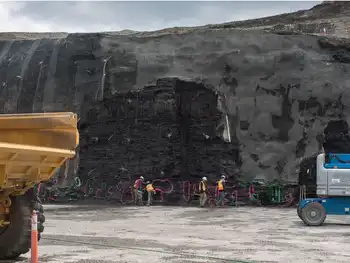Kyoto accord takes effect
OTTAWA, ONTARIO - The Kyoto Protocol, the first international effort to slow down global warming, went into effect after years of acrimonious political battle about its practical impact and potential economic fallout.
Ratified by 141 nations, including most industrialized countries, the treaty aims at slashing emissions of carbon dioxide and other greenhouse gases.
Legally binding since midnight, Kyoto will be formally launched in ceremonies around the world February 16, including announcements in Montreal by Environment Minister Stéphane Dion.
Dion is expected to formally confirm that Canada will host a two-week conference in November that will draw up to 5,000 climate experts and government officials from 180 countries to examine implementation of the accord.
Advisers have also urged Prime Minister Paul Martin to proclaim long-term objectives for Canada's climate change strategy, following the lead of British Prime Minister Tony Blair and the European Community. The EC Council of Ministers declared global warming should be limited to no more than 2 degrees C above current average temperatures and Blair committed the U.K. to reducing greenhouse gas emissions 60 per cent by mid-century.
But Dion repeated in Ottawa that Canadians will have to wait until the federal budget next Wednesday for most details of the government's plan to reduce greenhouse gas emissions nationally by 6 per cent below 1990 levels during 2008 to 2012, Canada's Kyoto target.
Government sources have hinted the plan could include financial incentives to speed the switch to energy-saving home appliances and perhaps also rebates for buyers of fuel-efficient motor vehicles. On a per capita basis, Canada is the third highest emitter of greenhouse gases in the world, only slightly behind the U.S. and Australia.
So far, Canada's efforts to tackle global warming, including a 2002 Action Plan, have had limited impact. Despite $3.7 billion in federal funds earmarked for climate change programs since 1997, Canada's emissions have risen 24 per cent since 1990, reaching more than 753 million tonnes of carbon dioxide or its equivalent in other greenhouse gases by 2003.
Dion told reporters that a lot of the 100 climate change projects financed by Ottawa are working well, others haven't worked and still others will pay off in the future.
"It is true that the 2002 plan is not enough and that we need to improve it and it is what we will announce pretty soon," the environment minister said.
Roughly half of Canada's greenhouse gas emissions come from a handful of large industries, including oil and gas, coal-fired electricity, cement plants, steel-making, mining and smelting operations.
Yet the latest version of the new federal Kyoto plan calls on these large industries to cut emissions by only 45 million tonnes out of the almost 300-million-tonne annual reduction needed to meet the 6 per cent target. The 2002 Action Plan set the industry reduction target at 55 million tonnes.
Climate change politics have been heated in Canada ever since the federal government made the 6-per-cent pledge in Kyoto.
Parliament symbolically endorsed the government's ratification of Kyoto only after a rancorous Commons debate in late 2002 that featured filibusters by Reform party MPs and prophesies of economic disaster from forcing industry and individuals to cut back on fossil fuel burning, the chief source of carbon dioxide.
Business leaders continue to warn that the federal plan will put Canada at a competitive disadvantage with the U.S., the world's largest emitter. The U.S. is boycotting Kyoto. As well, business is concerned that emerging economic superpowers like China and India will not be covered until the next phase of Kyoto, sometime after 2013.
Related News

Warren Buffett-linked company to build $200M wind power farm in Alberta
CALGARY - A company linked to U.S. investor Warren Buffett says it will break ground on a $200-million, 117.6-megawatt wind farm in southeastern Alberta next year.
In a release, Calgary-based BHE Canada, a subsidiary of Buffett's Berkshire Hathaway Energy, says its Rattlesnake Ridge Wind project will be located southwest of Medicine Hat and will produce enough energy to supply the equivalent of 79,000 homes.
"We felt that it was time to make an investment here in Alberta," said Bill Christensen, vice-president of corporate development for BHE Canada, in an interview with the Calgary Eyeopener.
"The structure of the markets here in Alberta make…




